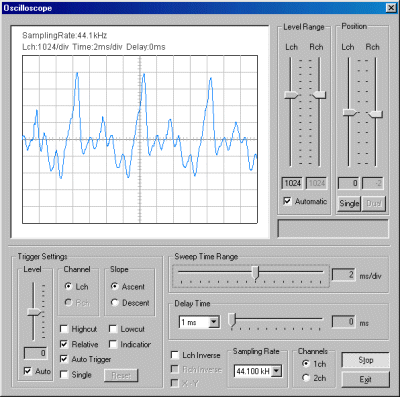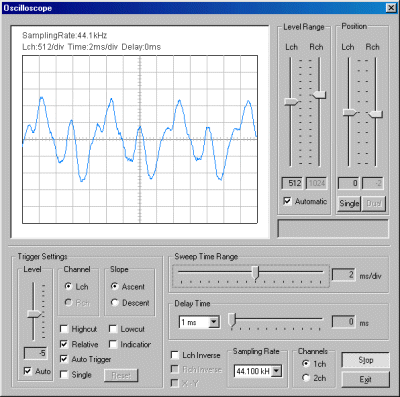If the oscilloscope is used in combination with the signal generator, it becomes possible to easily check for distortions caused by errors in dynamic ranges for A/D-D/A converters or various types of built-in PC analog amps. From the results of these checks, the user can adjust the software volume on the software mixer, or the program volume on the A/D-D/A converters. Confirmation of the accuracy of these signals is a fundamental rule of measurement.
Again, according to "Sound System Engineering" by Don Davis, "A camera is also required to record measurement data". But in the case of the measurement software, the use of the "screen copy" function is a much easier way to preserve a record than using a camera.
"Realtime Analyzer" is fully equipped with all these functions.
As a first example, let's look at the waveform of the spoken vowels.
 | I attached a miniature microphone to my shirt collar, and said "ahhh". Level range was set automatically to capture the signal properly. "Sweep Time Range" of 2ms/div was most appropriate. A waveform for a certain instant is displayed. |
 | This is
the waveform of "ohhh". You can see that waveforms of voice are different each other. To our ear, "O" sounds like "O" even if it is spoken loudly or softly, in a high or low pitch, fast or slow ... why is this? It would be an interesting study as well, wouldn't it? |
In the next page, how to perform the measurement of audio systems is described.